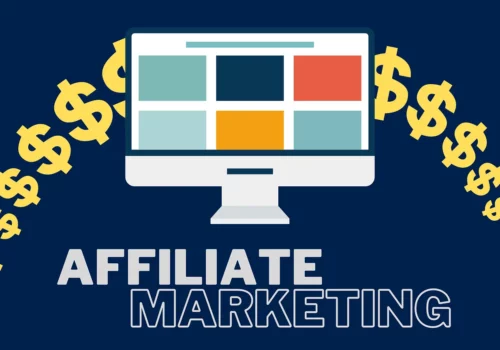Hey there! It is hard to find anyone these days who would not have ever clicked on their favorite Instagram influencer’s story, hooked by a must-have product, and found themselves clicking that magical link, isn’t it?
That’s the affiliate marketing magic at play, or I can say the PROWESS of Affiliate Marketing Partnerships! If you went ahead and bought that product, chances are your influencer buddy earned a commission.
The affiliate marketing industry is on track to hit a whopping $15.7 billion by 2024 (check it out at Influencer Marketing Hub).
It’s not just a drop in the digital media industry’s revenue bucket; it’s a massive 15% chunk (courtesy of Business Insider). But hey, even if you’ve seen these partnerships in action, the details might still be a bit hazy.
Affiliate marketing partnerships can be a powerful way to grow your business and increase revenue.
However, success is crucial to choosing the right partners, building solid relationships, maximizing promotional strategies, tracking performance, nurturing long-term relationships, and staying ahead of emerging trends.
In this comprehensive guide, Let’s explore all these aspects and provide valuable insights and tips to help you navigate the world of affiliate marketing partnerships.
What Exactly is An Affiliate Marketing Partnership?
Picture this: you’ve stumbled upon a fantastic product and can’t wait to tell everyone about it. Now, imagine getting a little something in return every time your recommendation leads to a sale.
That’s the essence of an affiliate marketing partnership – a win-win dance between brands and individuals. The brand boosts sales and exposure while you, the affiliate, pocket extra cash for your efforts.
The beauty lies in the flexibility of promotion. Whether rocking social media, blogging, or casually chatting with friends on WhatsApp, you’re in the game. And here’s the kicker: you only cash in when your promotional magic works.
There are no upfront costs for the brand; there is just payment for results.

Now, how does the cash flow? It’s often a percentage of the sales you drive – a sweet deal known as cost per sale (CPS). But hold on, payment triggers can vary.
Maybe you earn for every thousand eyeballs on your promo (cost per thousand impressions or CPM), each click (cost per click or CPC), or specific actions you nudge your audience to take (cost per action or CPA).
Today, it’s all about those special links. Each affiliate gets a unique link leading to the brand’s website. When someone clicks on your link and makes a move, the brand knows it’s your influence.
It’s like a digital fingerprint, ensuring credit lands where it’s due. So, next time you’re raving about a product, you might turn your passion into a side hustle!
What’s the Difference Between Affiliate Marketing And A Partnership?
Affiliate marketing is a type of partnership where businesses work together to promote products and services. Businesses pay affiliates a commission for each sale they generate.
In order for affiliate marketing to be successful, both the business and the affiliate need to work together. The business needs to provide high-quality products and services, and the affiliate needs to effectively promote those products and services.
Some businesses have close relationships with their affiliates, while others manage their affiliate programs more automatically.

Affiliate programs can be a great way for businesses to scale their affiliate marketing efforts, but they can also give businesses a lot of power over their affiliates.
In order to make affiliate marketing feel like a true partnership, businesses should make an effort to support their affiliates and help them grow.
This can include providing resources, training, and creative assets. The more successful an affiliate is, the more revenue there will be for both the business and the affiliate.
Affiliate marketing and partnerships might seem like twins, but they have their differences, and I have pointed out the differences below for you all to understand them in an easier way: –
1. The Purpose:
Affiliate Marketing: It’s like a performance deal. You (the affiliate) promote a brand’s stuff, and you earn a reward for each sale or action.
Partnership: This is a broader term. Partnerships cover various collaborations where two entities work together, and it’s not always based on performance metrics like sales.
2. Payment Structure:
Affiliate Marketing: You usually earn when you drive sales or specific actions. It’s performance-driven, like scoring points in a game.
Partnership: Payments and benefits can be more diverse. It’s not solely tied to specific actions but can involve revenue sharing, shared costs, or other arrangements.
3. Depth of Relationship:
Affiliate Marketing: Often involves a larger number of partners. The relationship can be transactional – you bring sales, they give you a commission.
Partnership: Implies a more extensive, collaborative connection. Partnerships may involve shared resources, joint ventures, or co-creating projects.
4. Scale:
Affiliate Marketing: Brands often have numerous affiliates. It’s like having a big squad, and each member contributes uniquely.
Partnership: This usually involves a closer connection with a smaller number of collaborators, fostering deeper engagement.
How Do You Choose the Right Affiliate Marketing Partners?
When selecting affiliate marketing partners, there are several factors to consider. First and foremost, you want to align yourself with partners whose products or services resonate with your audience.
This means understanding your target market and identifying the types of products or services that they are most likely to be interested in.
By partnering with brands that offer relevant and high-quality products, you can increase the likelihood of conversions and ultimately earn more commissions.

For example, if you run a lifestyle blog, you could partner with a company that sells outdoor gear or travel products, as your readers are likely to be interested in those products.
For example, I specialize in tech, so I wouldn’t want to promote a product that isn’t related to my niche. It’s important to choose something relevant to your audience and that you’ll be passionate about.
Researching and evaluating potential partners is also crucial in finding the right affiliate marketing partners. Take the time to thoroughly review each potential partner’s website, product offerings, and reputation.
Look for partners with a strong online presence, positive customer reviews, and a track record of success in their industry.
Additionally, consider contacting other affiliates or industry professionals for recommendations and insights.
For example, you could check review sites such as Trustpilot or the Better Business Bureau for feedback from other customers.
I always do that before I choose any partner. I also look for partners that offer a good commission rate, good reviews, and a high conversion rate.
By doing your due diligence, you can ensure that you partner with reputable brands to enhance your credibility as an affiliate marketer.
A Simple Guide To How to Create an Affiliate Partnership:
So, if you’re a brand that is ready to explore affiliate partnerships to boost your business. Let’s break it down into simple steps:

1. Choose Your Approach:
Decide if you want an in-house affiliate program or to use an affiliate network. An affiliate network is like a one-stop-shop, managing everything but limiting you to affiliates on that network.
In-house programs offer more control but require additional effort, often assisted by affiliate link-tracking software.
Example: Imagine an affiliate network as a marketplace where you find affiliates, and in-house as running your own store.
2. Design Your Affiliate Program:
Set the rules for your program. Determine how affiliates earn, commission rates, attribution models, cookie duration, and support.
Define goals – are you paying for sales (CPS), leads (CPL), or actions (CPA)?
Example: If you choose CPS, affiliates get a percentage of each sale they generate. A 10% commission on a $100 sale means they earn $10.
3. Find Affiliates:
Go out and discover potential affiliates using methods like Google searches, industry events, or specialized tools.
There are several tools and platforms that can help you find affiliates for your affiliate marketing program. Here are a few:
- Google: A simple Google search can lead you to potential affiliates. Look for influencers, bloggers, or websites related to your industry.
- Affiliate Networks: Platforms like CJ Affiliate (formerly Commission Junction), ShareASale, and Rakuten Advertising are affiliate networks where you can connect with a variety of affiliates.
- Social Media: Platforms like Instagram, Twitter, and LinkedIn are great for identifying influencers and content creators who may be interested in promoting your products.
- Industry Forums and Communities: Participate in forums and communities related to your industry. Engage with members who might be potential affiliates.
- Breezy: Breezy is a tool designed to help brands discover affiliate partnership opportunities quickly and efficiently.
- Affiliate Marketplaces: Explore marketplaces like ClickBank or JVZoo, where affiliates showcase the services and products they’re interested in promoting.
4. Collaborate and Support:
Once you have affiliates, the work isn’t over. Collaborate with them to maximize results. Provide resources like product demos, training, freebies, creative assets, and a support team.

Keep communication open, listen to affiliate needs, and build a supportive partnership.
Example: If your brand sells beauty products, offer affiliate tutorials on effective product promotion.
Remember, this partnership is an ongoing relationship. The more you support your affiliates, the more successful the collaboration and the better the results for both parties.
Best Practices for Building Strong Affiliate Marketing Partnerships:
Building strong affiliate marketing partnerships requires more than just finding the right partners. Fostering relationships based on trust, effective communication, and collaboration is essential.
Regularly check in with your affiliate partners to discuss their needs, goals, and any challenges they may be facing. This open line of communication will help you better understand how to support them and provide the resources they need to succeed.

In addition to communication, collaboration is key to building strong affiliate marketing partnerships. Work with your partners to develop strategies and promotional campaigns that align with your goals.
You can create a more cohesive and impactful marketing strategy by collaborating on content creation, sharing ideas, and leveraging each other’s strengths.
Remember, the success of your affiliate partners directly impacts your own success as an affiliate marketer, so it’s in your best interest to provide the support and resources they need to thrive.
Maximizing Revenue: Effective Promotional Strategies for Affiliate Marketing Partnerships
When maximizing revenue in affiliate marketing partnerships, affiliates must employ effective promotional strategies. One key strategy is to explore various marketing channels to reach a wider audience and drive more sales.
Social media platforms like Instagram and YouTube can empower affiliates to showcase products and engage with their followers.
By creating compelling content and leveraging the power of social media influencers, affiliates can increase brand visibility and attract new customers.

Email marketing is another valuable promotional strategy that affiliates can utilize. Building an email list allows affiliates to communicate directly with their audience and promote products or special offers.
By crafting personalized and engaging emails, affiliates can nurture relationships with their subscribers and drive conversions. Additionally, content creation is a powerful way to attract and engage potential customers.
Whether it’s through blog posts, videos, or podcasts, creating valuable and informative content that resonates with your audience can establish you as an authority in your niche and drive traffic to your affiliate links.
Tracking and Analyzing Performance in Affiliate Marketing Partnerships
Tracking and analyzing performance metrics is crucial in affiliate marketing partnerships as it allows both the brand and the affiliate to measure the effectiveness of their promotional efforts.
By monitoring key performance indicators (KPIs), such as click-through rates, conversion rates, and revenue generated, both parties can gain valuable insights into what is working and what needs improvement.

Tracking performance helps affiliates optimize their promotional strategies and enables brands to evaluate the success of their affiliate program and make data-driven decisions.
There are various methods for tracking performance in affiliate marketing partnerships. One common method is through the use of affiliate links.
Each affiliate is provided with a unique tracking link that they include in their promotions. When a consumer clicks on the link and makes a purchase, the affiliate link attributes the sale to the specific affiliate, allowing for accurate commission calculations.
Another tracking method involves using cookies, small files stored on a user’s browser that track their interactions with websites.
Cookies can help track referral sources, track conversions over time, and attribute sales to specific affiliates.
Nurturing Long-Term Affiliate Relationships: Retention Strategies for Brands
Building long-term relationships with affiliate partners is crucial for brands looking to maximize the success of their affiliate marketing program.
By nurturing these relationships, brands can benefit from the loyalty and expertise of their affiliates, leading to increased sales and revenue.
One key strategy for retaining affiliates is to provide ongoing support and training. By offering resources such as webinars, tutorials, and educational materials, brands can help their affiliates improve their promotional strategies and drive better results.

Additionally, brands can offer exclusive perks and incentives to keep affiliates engaged and motivated. This could include higher commission rates for top-performing affiliates, early access to new products or promotions, or special bonuses based on performance milestones.
Another important aspect of nurturing long-term affiliate relationships is effective communication. Regularly checking in with affiliates, providing feedback on their performance, and addressing any concerns or challenges they may have can help build trust and strengthen the partnership.
Brands should also listen to their affiliates’ feedback and ideas, as they often have valuable insights into their audience’s preferences and needs.
By collaborating with affiliates on campaign planning and content creation, brands can create a sense of ownership and investment in the partnership’s success.
By prioritizing ongoing support, communication, and incentives, brands can foster long-term relationships with their affiliate partners and create a mutually beneficial partnership.
FAQs
🤷♀️ How do affiliate partnerships work?
In an affiliate partnership, individuals (affiliates) promote products/services through unique affiliate links. When a sale or desired action occurs through the affiliate's link, they earn a commission.
🧐 Is affiliate marketing suitable for beginners?
Yes, affiliate marketing can be beginner-friendly. The guide provides insights and tips to help newcomers understand the basics and start their affiliate marketing journey.
🤔 How do I find affiliate programs to join?
The guide provides tips on finding reputable affiliate programs in various niches, exploring affiliate networks, and understanding program terms and conditions.
🤥 How can I maximize earnings as an affiliate marketer?
Learn effective strategies for optimizing your affiliate marketing efforts, including content creation, audience targeting, and leveraging different marketing channels.
👀 How can I track my affiliate marketing performance?
Explore various tracking tools and metrics discussed in the guide to monitor the performance of your affiliate marketing campaigns and optimize for better results.
Quick Links:
- Affiliate Marketing Mistakes: Common Mistakes to Avoid
- Why Should You Join Affiliate Marketing Forums?
- Pro Affiliate Marketing Tips: Strategies And Best Practices To Earn Money!
- What is EPC in Affiliate Marketing And How Can It Be Calculated?
Conclusion: Affiliate Marketing Partnerships
In summary, affiliate marketing partnerships are a specific type of strategic collaboration focused on mutual benefits.
Within this partnership, a brand collaborates with a third party to promote its products, and the affiliate or affiliate marketer responsible for the promotion earns compensation based on performance.
So, you are ready to kickstart your own affiliate marketing partnerships. Here’s a big shoutout from my side.
If you are still confused about any aspect of affiliate marketing partnerships, you may write it down in the comments section or connect with me on my social media channels.









